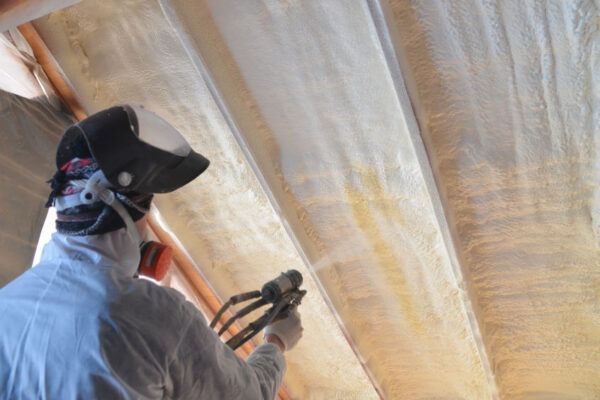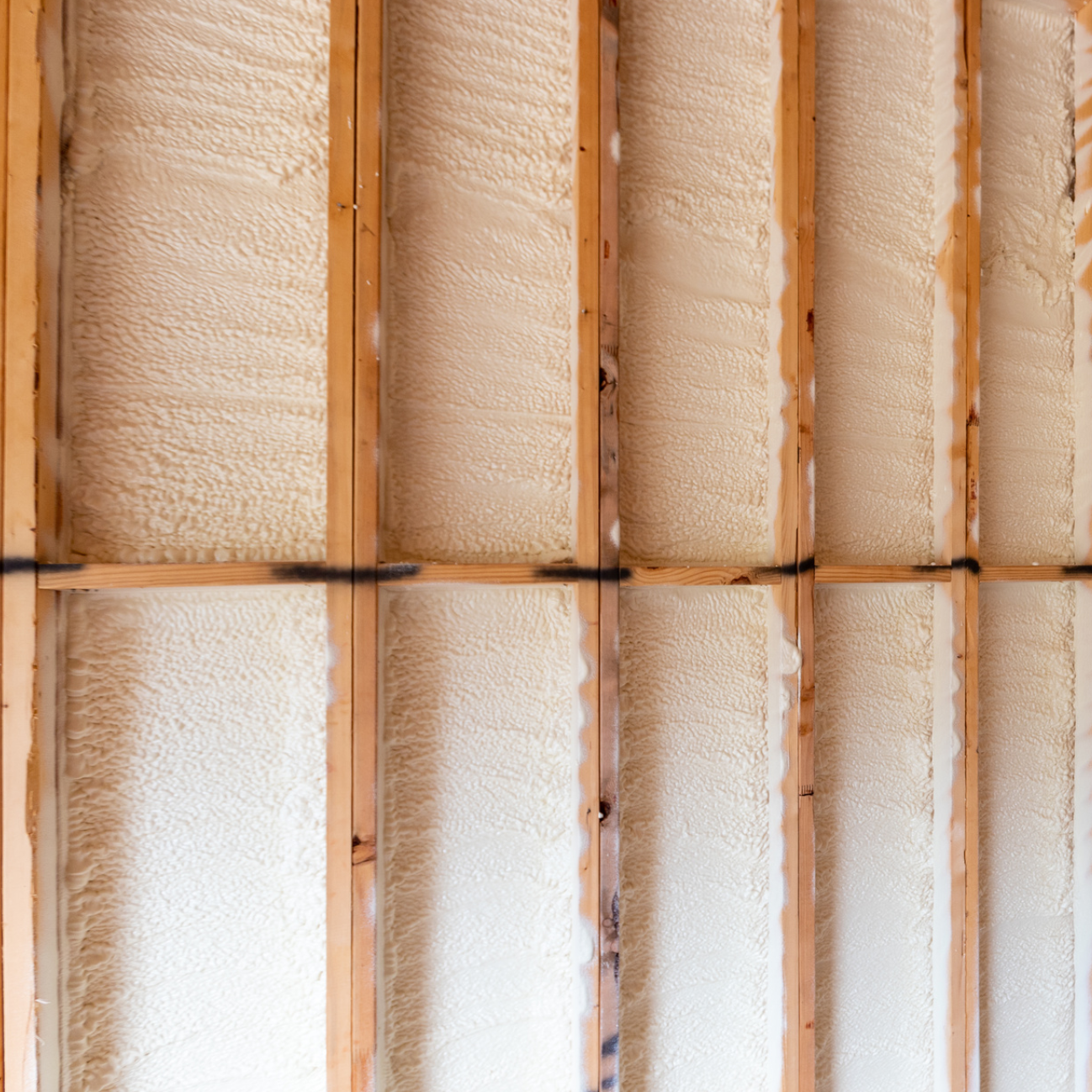The Environmental Impact of Spray Foam: Sustainability Considerations
The Environmental Impact of Spray Foam: Sustainability Considerations
Blog Article
How Spray Foam Can Enhance Power Performance in Any Type Of Building
Spray foam insulation has become a pivotal solution for boosting energy efficiency throughout different building kinds. By developing a closed seal that minimizes air leak, it successfully controls indoor environments while substantially decreasing cooling and heating expenses. Additionally, its impressive R-value and moisture-resistant properties add to long-term power cost savings and boosted building long life. As residential property owners progressively seek sustainable options, the implications of spray foam insulation prolong past simple energy savings. The full extent of its benefits, nevertheless, warrants a more detailed examination of exactly how it can change energy monitoring strategies in both commercial and property setups.
Recognizing Spray Foam Insulation
Spray foam insulation is significantly identified for its superior thermal performance and flexibility in different applications. Composed mainly of polyurethane, this insulation material is applied as a liquid that expands upon contact, filling gaps and creating a seamless barrier. This unique residential or commercial property allows spray foam to comply with irregular surfaces, making it a perfect option for both residential and commercial frameworks.

Application of spray foam insulation is generally done by experienced professionals utilizing specific tools, making sure optimum efficiency and safety and security - Spray Foam. The curing procedure is rapid, enabling for fast installment and marginal disturbance. Consequently, spray foam insulation is increasingly being utilized in new building and retrofitting jobs because of its capability to improve architectural honesty while boosting total power efficiency in buildings
Benefits of Energy Efficiency
Power effectiveness plays a critical duty in minimizing operational prices and reducing ecological effect throughout different sectors. By maximizing energy usage, house owners and businesses can attain significant financial savings on utility expenses, which straight enhances economic performance. Effective power consumption indicates less reliance on nonrenewable fuel sources, consequently adding to a reduction in greenhouse gas exhausts and promoting a more lasting setting.
Furthermore, energy-efficient structures typically experience increased property values. As power prices rise and sustainability becomes a concern for customers, buildings with boosted energy efficiency functions are extra eye-catching on the market. This fad urges investment in energy-saving technologies, which can better drive innovation and economic development.
Along with environmental and monetary benefits, energy effectiveness can likewise enhance the general comfort and health and wellness of indoor areas. Appropriate insulation and efficient heating and cooling systems help maintain regular temperature levels, reducing drafts and moisture degrees, which subsequently can cause much better indoor air quality.
Ultimately, the advantages of power effectiveness prolong beyond prompt financial savings, fostering a durable economy, promoting ecological stewardship, and improving the high quality of life for residents in any kind of structure.
Exactly How Spray Foam Works
Generally used as a fluid, spray foam broadens rapidly upon call with surfaces, creating a solid barrier that properly seals gaps and splits. This special building is because of its chemical composition, mostly consisting of isocyanates and polyols, which respond when mixed to produce a foam that sticks and fills spaces to various materials, consisting of steel, timber, and concrete.
As soon as applied, the foam increases to several times its initial quantity, making sure a tight seal that stops air leakage. This process dramatically decreases thermal bridging, which takes place when heat transfers with products, resulting in power loss. The foam's high R-value, a measure of thermal resistance, contributes to boosted insulation by minimizing warm transfer in between the inside and exterior atmospheres.
In addition, spray foam is immune to moisture and insects, additionally boosting its efficacy in maintaining energy effectiveness. Its application can be customized to various locations, consisting of attic rooms, wall surfaces, and crawl spaces, optimizing insulation across a building. Spray Foam. Generally, the cutting-edge layout and reference application approach of spray foam make it a reliable solution for improving energy efficiency in any structure, resulting in decreased explanation energy costs and a much more sustainable built environment

Applications in Different Buildings
Many applications of spray foam insulation can be discovered throughout different structure types, boosting energy performance and comfort. In household homes, spray foam is typically made use of in attics and wall surfaces to produce a smooth barrier against air leaks, significantly minimizing home heating and cooling demands. This application is specifically advantageous in older homes, where standard insulation might be inadequate.
In industrial structures, spray foam insulation is related to roofing system systems and outside wall surfaces, which aids to improve thermal performance and secure versus moisture breach. Its lightweight nature makes it an optimal selection for retrofitting existing frameworks without including substantial weight. Additionally, spray foam can be utilized in industrial settings to protect pipelines and tank, keeping temperature level control for delicate products.
Institutional structures, such as colleges and medical facilities, take advantage of spray foam insulation by making sure a regular interior climate that supports resident comfort and health. The flexibility of spray foam allows it to adapt to various structure sizes and shapes, making it a favored option for designers and contractors seeking effective insulation solutions. Overall, spray foam insulation functions as a critical part in accomplishing energy-efficient buildings throughout all fields.
Long-Term Expense Cost Savings
Spray foam insulation offers substantial lasting expense savings for structure owners and occupants by lowering power consumption and reducing energy expenses. By providing a premium air seal, spray foam lessens the infiltration of outdoors air, thus enhancing the thermal efficiency of a building. This causes much more reliable heating and cooling down processes, which can lead to considerable reductions in power costs with time.
Along with instant cost savings on energy expenses, the durability and long life of spray foam insulation contribute to its economic advantages. Unlike conventional insulation products, which may droop, work out, or wear away, spray foam maintains its efficiency for years, decreasing the demand for frequent substitutes or repairs. This durability converts to lower maintenance expenses and much less disruption for residents.
In addition, buildings furnished with spray foam insulation go to my blog usually delight in a boost in residential or commercial property value, making them a lot more enticing to potential buyers or renters. As power performance comes to be increasingly prioritized, buildings with reliable insulation solutions stand out on the market. Eventually, the combination of spray foam insulation not just improves comfort however likewise represents a tactical investment that yields significant financial advantages over the long-term.
Verdict
Finally, spray foam insulation functions as an essential element in improving energy efficiency throughout varied structure types. Its ability to develop a smooth barrier against air leak, integrated with high R-values and moisture-resistant properties, dramatically minimizes energy consumption and linked expenses. The application of spray foam not only adds to constant indoor temperature levels but also boosts property value, highlighting its function as a prudent financial investment for both domestic and commercial residential or commercial properties.
Spray foam insulation has actually emerged as a pivotal option for enhancing power efficiency throughout various structure types. Spray Foam. As an outcome, spray foam insulation is increasingly being utilized in brand-new building and retrofitting tasks due to its capability to boost structural stability while improving general power efficiency in buildings
On the whole, the ingenious layout and application method of spray foam make it an efficient remedy for improving energy performance in any kind of structure, leading to minimized power costs and a much more lasting constructed environment.
Various applications of spray foam insulation can be located throughout various building types, improving power efficiency and comfort.In final thought, spray foam insulation offers as an essential component in improving power performance throughout diverse building types.
Report this page